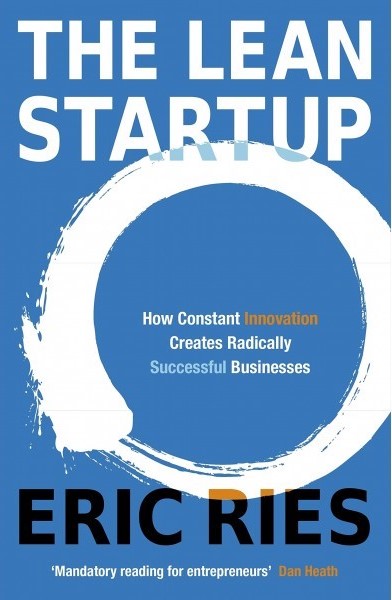Why Sewing is like Coding - Debugging
Whether I’m at a keyboard or behind my sewing machine, I spend most of my time not in the act of creating, but in the act of fixing. Debugging, testing, twea...

This book introduces the Lean Startup methodology, a framework for building businesses that adapt quickly and innovate continuously. It combines lessons from successful startups with a systematic approach to validated learning and iterative development.
I picked up this book to learn more about how startups use Lean methodology. While I was searching for books on Agile and Lean practices—not startups specifically—I thought it might still be relevant. I’m not ruling out starting a business someday, and despite its age, this book seemed like a valuable read. Plus, I was curious to learn from startup success stories.
Eric Ries shares insights from his experiences, particularly with IMVU, a now-dated instant messaging add-on. While I don’t remember IMVU myself, I found its story fascinating, especially how the company and others adapted their strategies through pivots and experiments.
One story that stuck with me was about IMVU’s avatar movement feature. Instead of programming full character animations, the team built a minimal viable product (MVP) where avatars simply “teleported” across the screen. Surprisingly, users loved it and even considered it more advanced than games like The Sims. If the team had spent time perfecting full animations, the result might not have resonated with users—and it would have been wasted effort.
This resonates with me because it’s a reminder that my assumptions about what users want can be wrong. Until you put an MVP into users’ hands, you can’t truly know if you have a valuable product.
This book reinforced the importance of focusing on goals rather than jumping straight to features. As I work on projects with my team, I want to keep this in mind: new ideas are great, but it’s essential to stay aligned with the bigger picture and iterate based on real user feedback.
I appreciated the real-world examples of companies overcoming challenges and applying the Build-Measure-Learn loop, which aligns well with Agile principles. However, many of the companies mentioned, like IMVU and Grockit, are no longer relevant today. An updated edition would make the book feel more current and applicable.
If you’re thinking about starting a business or are curious about how startups operate, this book offers valuable lessons. It’s also a good read for anyone interested in the history of some notable companies and how they navigated challenges.
“You can imagine our surprise when we started to get positive customer feedback. We never asked about the movement feature directly (we were too embarrassed). But when asked to name the top things about IMVU they liked best, customers consistently listed avatar “teleportation” among the top three (unbelievably, they often specifically described it as “more advanced than The Sims”).” – pages 108-109
I’d recommend this book if you’re curious about how companies learn to pivot and succeed. However, the examples feel a bit dated, so its relevance might depend on how much you want to learn from the past versus applying the ideas to today’s landscape.
Whether I’m at a keyboard or behind my sewing machine, I spend most of my time not in the act of creating, but in the act of fixing. Debugging, testing, twea...
Iterative testing. Getting the customer involved early and often. These key ideas are not only frequently mentioned but thoroughly explained in books about a...
It all started with a need. I attend weekly tech meetups and often share event details on Discord with my group. But as the list grew, keeping things organiz...
Eric Ries 2011
Jake Knapp, John Zeratsky, Braden Kowitz 2016
Andrew Stellman & Jennifer Greene 2014
What is this ‘Maker Faire?’
Getting the thoughts out there - using Lucidchart
What’s the least amount of (and most important) features we need to make for the design so that we can start testing?
How do you know when to stop? We discussed the research that our group has been working on. Two students are looking through the App Store and Google Play St...
AI/Tech Coffee Social ☕
Friday Team Meeting #1 - Online edition
Tuesday Team Meeting #2: Getting the hang of it
Monday Meeting #2: Reconvening after our First Full Week of Work
Maja Dakic 2023
Jeff Gothelf & Josh Seiden 2021
John Whalen, PhD. 2019